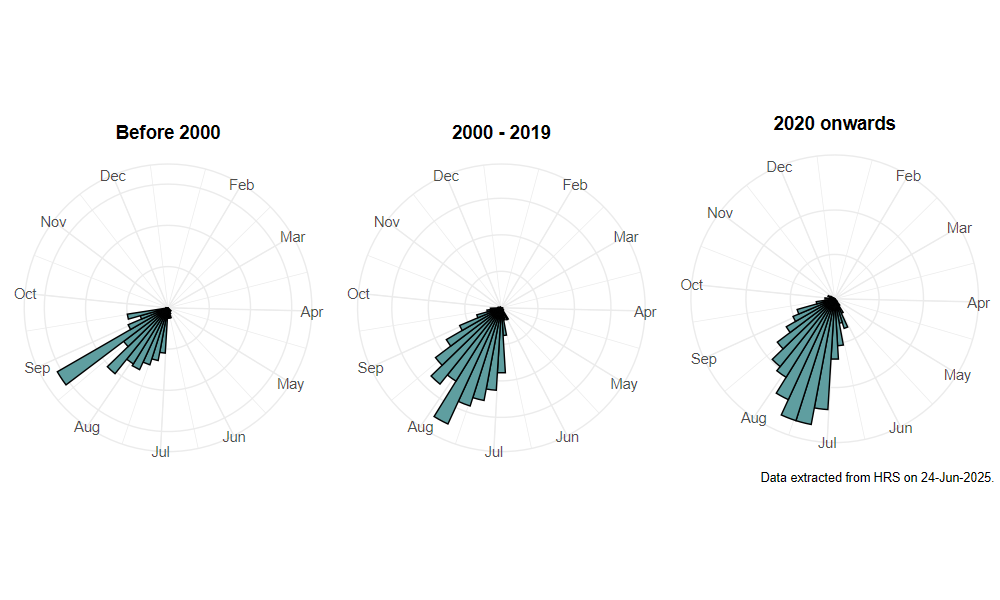Cheilosia soror (Zetterstedt, 1843)
Identification
Identification difficulty = 3. ![]()
![]() according to Ball & Morris, 20241
according to Ball & Morris, 20241
Synonymy
Cheilosia ruffipes (Preyssler, 1793).
Biology
The larva is believed to inhabit fungi, and this species is reported to have been bred from truffles. Adults are strongly associated with Chalk and limestone, where they have been found feeding on the flowers of white umbels, especially Hogweed Heracleum sphondylium and Wild Parsnip Pastinaca sativa, in grassy rides and glades.
Flight period
The following plots show the number of unique records per week excluding those reported to be of immature stages.

Status
Listad as 'Notable' by Shirt, 19872, but Ball & Morris, 20143 considered it LOWER RISK.
Distribution
Records are widely scattered from chalk and limestone areas, mainly in eastern England, as far north as Morecambe Bay. Records from London suburbs suggest that it may be more widely distributed, possibly influenced by the calcareous content of concrete and rubble in urban areas. Records have become much more frequent since 2000 and there is evidence of a northward expansion of the range.

Trends
The following plots show the Frescalo TFactor vs year and a map of the rescaled frequency (all records) for the species.
-
Ball, S., & Morris, R. (2024). Hoverflies of Britain and Ireland. WILDGuides (3rd ed.). Oxford: Princeton University Press. ↩
-
Shirt, D. (Ed.). (1987). Red Data Books: 2. Insects. Peterborough: NCC. ↩
-
Ball, S., & Morris, R. (2014). A review of the scarce and threatened flies of Great Britain. Part 6: Syrphidae. ( No. 9). Species status (pp. 1–130). Peterborough: JNCC. ↩